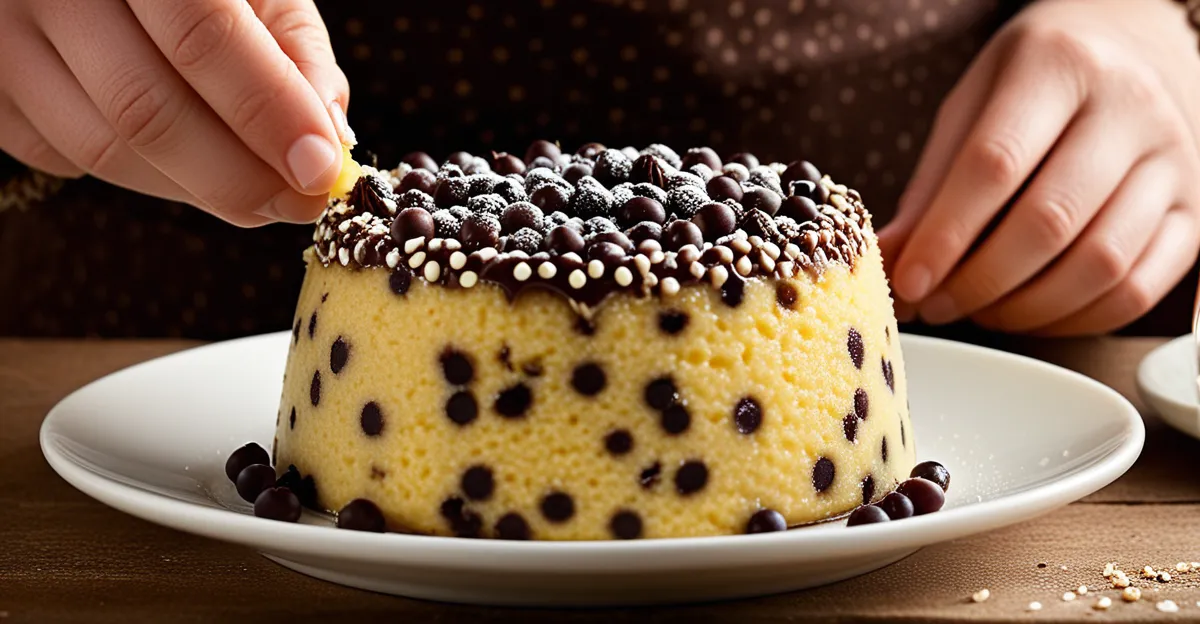Essential Ingredients for Perfect Spotted Dick Texture
Creating the ideal spotted dick texture starts with selecting the right spotted dick ingredients. Suet, traditionally used, plays a crucial role in providing richness and lightness. High-quality beef or vegetable suet ensures a tender crumb, while alternatives like grated suet substitute can work, though they may slightly alter the texture. Using poor quality or insufficient suet often leads to a dense, heavy pudding.
Flour choice significantly affects structure. Plain flour is typical, lending a soft and delicate texture. Using self-raising flour can make the pudding overly cakey, while bread flour often results in toughness due to its higher gluten content. The balance of flour type is essential to maintain the tender yet structured feel expected.
In parallel : How Does Traditional UK Cooking Influence Modern Cuisine?
Currants, the “spots” in the traditional British dessert, contribute not only flavor but also moisture. Their plumpness and juiciness subtly influence the final texture by adding bursts of softness within the crumb. Other dried fruits like raisins can be used but may change the puddings’ moisture balance. Properly measured currants help create the distinct look and moist, appealing texture characteristic of spotted dick.
Preparation Techniques That Influence Texture
Proper spotted dick preparation is vital for achieving the characteristic lightness and moistness of this traditional British dessert. One key factor is the mixing methods employed. Overmixing develops gluten excessively, resulting in a tough texture. Conversely, undermixing leads to uneven distribution of ingredients, causing dense pockets. Gently folding suet, flour, and currants together until just combined preserves a tender crumb.
Also read : What are the traditional accompaniments for a Sunday roast?
Achieving the correct dough consistency hinges on adequate hydration. The mixture should be soft but not sticky, allowing it to hold shape without becoming heavy. Adding liquid gradually and assessing dough feel can prevent overly wet or dry batter, which directly affects moistness after cooking.
Shaping plays a subtle yet important role. Forming a smooth, even loaf ensures uniform cooking inside. When wrapped tightly in cloth or foil, the pudding cooks evenly during steaming, preserving the desired spotted dick texture without sogginess or dryness. Following traditional British dessert techniques in preparation helps maintain the authentic balance between density and softness crucial to a perfect pudding.
Steaming and Baking: Achieving Lightness and Moistness
Steaming spotted dick is integral to developing the perfect pudding texture characterized by lightness and moistness. Ideal steaming times generally range from 1.5 to 2 hours, depending on pudding size. Maintaining consistent water levels is essential; allowing the water to boil dry can cause uneven cooking and a dry texture. Covering the pudding tightly with greaseproof paper and foil prevents steam penetration issues, ensuring even moisture distribution.
Baking, while less traditional, produces a firmer exterior and denser crumb than steaming. Baking times must be carefully managed, typically shorter than steaming, to avoid a dry, heavy dessert. The controlled, indirect heat of steaming encourages gradual cooking, preserving moisture, unlike the dry heat from baking which may toughen the suet.
Temperature management during steaming is crucial. Water should be at a steady simmer, not a rolling boil, to avoid sudden heat shocks that disrupt the crumb structure. A gentle, consistent steam creates an even rise, supporting the delicate texture expected in a traditional British dessert.
In summary, steaming with careful temperature and time control is the preferred method to achieve the moist and tender spotted dick texture prized in classic recipes.
Troubleshooting Texture Issues in Spotted Dick
Common spotted dick problems like mushy pudding or dry spotted dick often stem from mishandling moisture balance. A mushy pudding results when too much liquid is added or steaming occurs for too short a time, preventing the suet from setting properly. To fix this, reduce liquid slightly and extend steaming to ensure a firm yet moist crumb. Conversely, a dry spotted dick typically arises from overcooking or insufficient suet and currants, which are vital for moisture retention.
Heavy dessert texture usually indicates overmixing during spotted dick preparation, activating gluten excessively. This leads to toughness rather than the desired delicate softness. Correct mixing methods involve folding ingredients gently and avoiding vigorous stirring. Checking dough consistency helps too—a sticky, overly wet batter can cause sogginess, while a crumbly one will be dense.
Undercooking also produces undesirable texture. If the pudding is raw in the center, increase steaming time while maintaining steady simmering water. Proper wrapping during cooking prevents excess moisture loss, combating dryness.
By diagnosing these issues carefully, adjustments in preparation and cooking restore the authentic spotted dick texture prized in traditional British desserts.
Expert and Historical Insights on Spotted Dick Texture
The traditional spotted dick has evolved over centuries, with historical recipes emphasizing a delicate balance of moisture and crumb. Early British cookbooks often prioritized suet quality, noting that fresh beef suet was key to achieving the authentic, tender spotted dick texture prized in this classic British pudding. Expert bakers from earlier eras insisted on precise measurements of flour and currants to prevent heaviness or dryness, highlighting the importance of ingredient ratios.
Expert tips from seasoned cooks stress gentle folding during spotted dick preparation to preserve lightness, a technique passed down through generations. They also recommend steaming over baking, reflecting historical preferences, to maintain moisture and avoid a dense finish.
Variation through time—such as modern suet substitutes or alternative flour blends—has influenced texture outcomes, sometimes compromising traditional softness. Experts advise understanding these changes’ effects to adjust technique accordingly, preserving the pudding’s signature qualities.
By studying historical recipes and expert advice, bakers can better appreciate the craftsmanship behind the authentic British pudding texture, ensuring each modern version respects its rich culinary heritage while achieving perfect balance.




